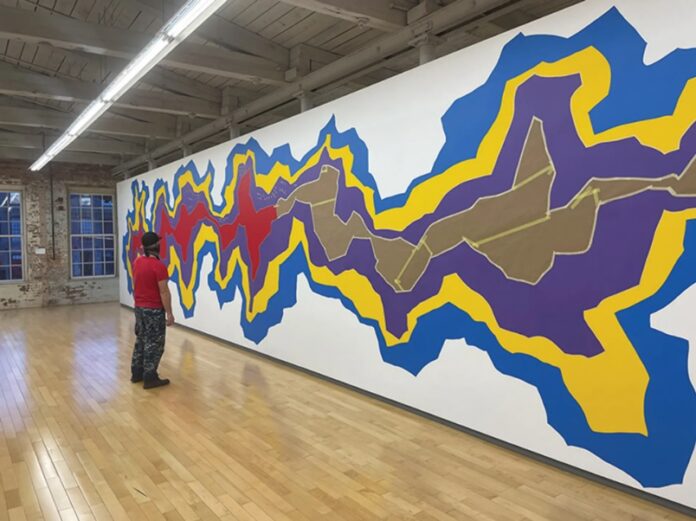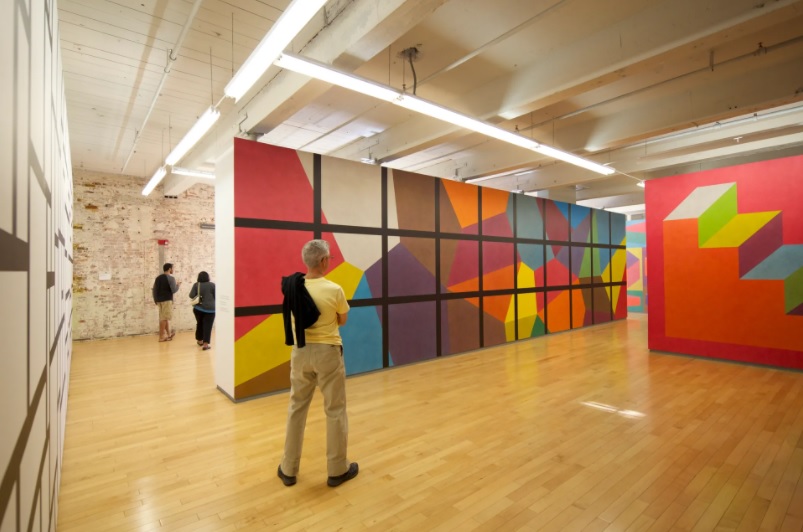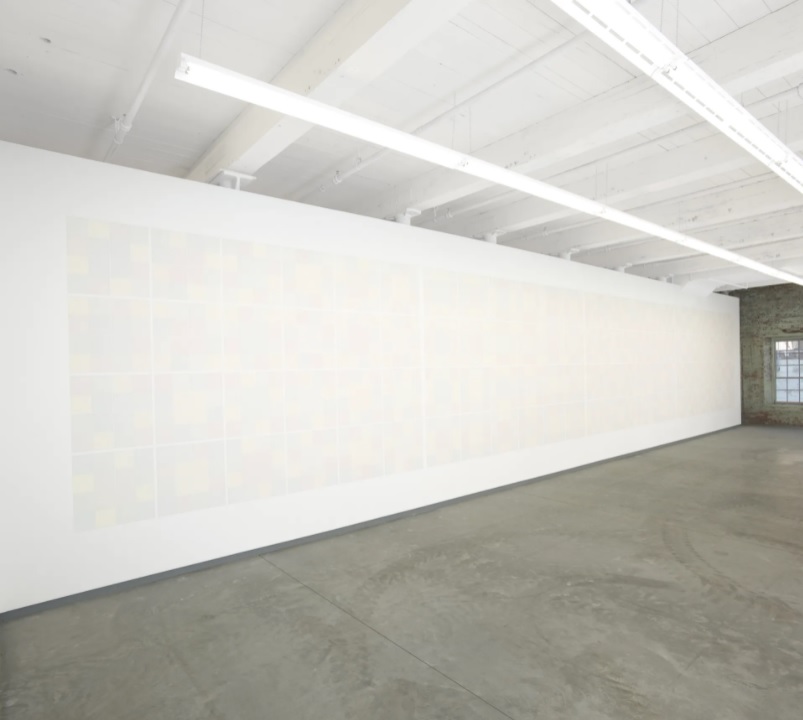
Eight of the 105 wall drawings in the sweeping retrospective, slated to be on view until 2043, will be restored as part of the project
The Massachusetts Museum of Contemporary Art (Mass Moca) has embarked on a major conservation project to rejuvenate wall drawings in its long-term retrospective devoted to the late conceptual artist Sol LeWitt. The panoramic installation of 105 large-scale drawings that the artist devised as diagrams between 1969 and 2007 spans nearly an acre and three storeys of a 19th-century mill on the museum’s campus in North Adams, Massachusetts.
LeWitt was working in sculpture and other media before starting to create wall drawings in the late 1960s, unveiling the first in Paula Cooper Gallery’s inaugural exhibition in New York in 1968, a show benefitting anti-Vietnam War causes that also featured minimal abstract works by Donald Judd, Dan Flavin, Carl Andre and others.
After conceiving the wall drawings, LeWitt contracted other artists to execute the works, which are translated onto the wall from specific geometric combinations the artist described through precise but simple instructions.
“One of the things that we believe perpetuated the wall drawings was LeWitt’s contribution to Seth Siegelaub’s Xerox Book (1968) and the idea of this democratic effort to endlessly disperse the works,” says Susan Cross, the senior curator of the museum, who has helped steward the retrospective since 2008 and is overseeing the restoration with the LeWitt studio.
Mass Moca’s wall drawings were completed posthumously in 2008 as part of a collaboration between the museum, the LeWitt estate, more than 60 artists, the Williams College Museum of Art and the Yale University Art Gallery. It was curated by LeWitt in collaboration with Joe Thompson, the former director of the museum, and Jock Reynolds, then the director of the Yale University Art Gallery.

© Estate of Sol LeWitt/Artists Rights Society (ARS), New York.
The retrospective is on view until 2043, but conservation issues have emerged over the last 14 years. Environmental factors in the museum’s sun-drenched galleries present one set of challenges, and the lead and graphite used in the original drawings were “not of adequate calibre”, according to John Hogan, a principal draftsperson for the artist since 1982 and the installation director and archivist for LeWitt’s wall drawings at Yale University Art Gallery. “LeWitt wanted materials that were accessible, affordable, practical and ubiquitous across the world,” he adds.
“The estate has had materials especially manufactured now and, through micro fading tests, we can tell these are the most stable on the market at the moment, lasting up to 25 years,” he adds.
Numerous wall drawings LeWitt conceived in his career were also never varnished, and were more recently treated with water-based varnishes and UV filtration.
Eight of the museum’s 105 drawings are being restored to some degree and some will be completely erased and redrawn, including Wall Drawing #1211, a 24-unit grid conceived in the 1970s that was first installed at Dia Beacon in 2006. The work has been damaged, with several smudges and faded areas compromising LeWitt’s standards and vision for the work.
The two draftspeople leading the restoration of Wall Drawing #1211, Lacey Fekishazy and Roland Lusk, have worked with LeWitt’s studio (and now his estate) for decades. “I’m not sure if I would call this a restoration; we’re redoing entire drawings, whereas there’s other parts that require fixing a spot or cleaning it,” Lusk says. “There’s two different ways to go about it—you can fix what’s there or just paint over it.”

Courtesy Massachusetts Museum of Contemporary Art.
A future-oriented perspective
The project involves around six assistants, some of whom are recent graduates from Williams and Yale. “Those people—if we are lucky—get inspired by the process and are drawn into wanting to work on the drawings,” Hogan says. “At this point there are very few people doing the work who actually even knew Sol. That’s one of the generational continuums of the piece.”
At this point there are very few people doing the work on these drawings who actually even knew SolJohn Hogan, principal draftsperson for LeWitt
The process will be documented so that “the information can be passed onto future generations; even 100 years from now, there will be a reference point”, Hogan says. “There’s all this criteria that goes into understanding these paintings: how to restore them, how to source traditional materials and how it is executed, which all comes from an almost scientific perspective.”
Hogan has worked on and conserved several wall drawings. “The first time you do it, you’re nervous and uncomfortable, then the second time you evaluate your mistakes, hone your skills,” he says. “Ultimately one of the things that all long-term draftspeople come to fall back on is LeWitt’s notion of musical composition and musical performance, or the performative aspect of the work.”
The more than 1,300 wall drawings LeWitt completed in his lifetime were first fully identified as part of the research for a catalogue raisonné published in 2018. Some of them had been documented but not properly photographed and were remade as part of the project.
The full conservation of Mass Moca’s wall drawings is expected to be completed this month. The project has a budget of $250,000 granted by an anonymous donor to cover labour, materials, accommodation, documentation and related programming. The ongoing care and conservation of the wall drawings is also supported by the philanthropist Agnes Gund.
- Sol LeWitt: A Wall Drawing Retrospective, until 2043, Mass Moca






















